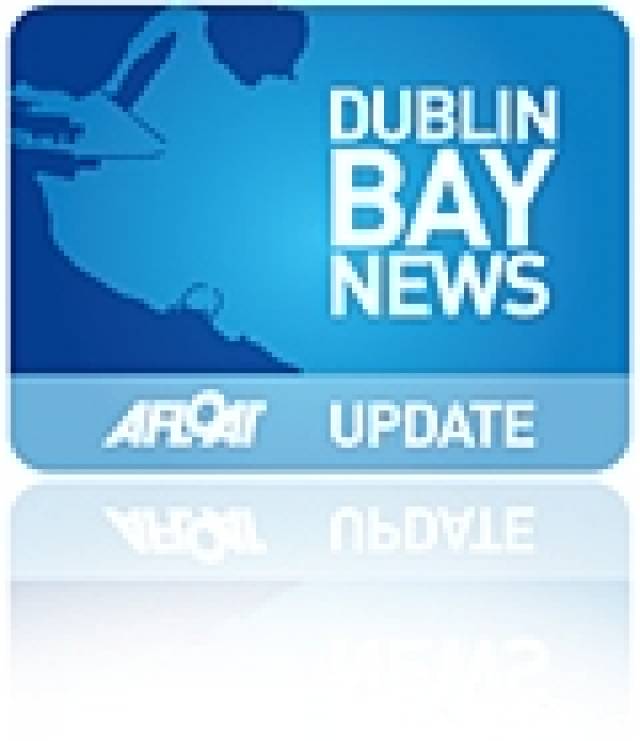Ireland has an opportunity to become an example of best practice in diaspora engagement and policy. That's according to the organisers of the European strand of the Global Diaspora Forum, which is taking place in Fitzpatrick's Castle Hotel in Killiney over the next two days (14th and 15th May). Opening the conference, Gerry Dunne, CEO of Dún Laoghaire Harbour Company, said: "Despite its size, Ireland punches far above its weight when it comes to diaspora issues. This makes us so well-placed to be the first partner, outside of the US, to collaborate in the delivery of the Global Diaspora Forum.
The Global Diaspora Forum is a celebration of diaspora communities, and has been held annually in Washington DC since 2011. The forum is coordinated by the International Global Diaspora Engagement Alliance (IdEA), the US Department of State and the US Agency for International Development.
The European strand was organised by the Irish International Diaspora Centre (IIDC) Trust, which is working to deliver a world-class diaspora centre in Dublin. The Trust operates under the auspices of Dún Laoghaire Harbour Company.
"Ireland's diaspora – estimated to be in the realm of 70 million – have permeated every corner of the globe and most professions, ranging from medical to political to culture and the arts. This Irish diaspora experience is an enormous untapped resource, which we are only awakening to. By reaching out to our diaspora, we can create communities centring on business, technology and the creative industries. We can share ideas and collaborate to bid for business and implement initiatives for the common good.
"However, diaspora engagement needs to be facilitated by governments," said Mr Dunne. "Given the scale and good reputation of Ireland's diaspora, we are ideally placed to become a best-practice model in terms of how we engage with our diaspora communities and how we implement policies and structures to maximise benefits.
"Issues such as voting rights for diaspora; structures for creating business linkages; and ways to help generations of diaspora connect with their roots are some of the areas that can be explored as measures to maximise the benefits of connecting with our diaspora. Of course, diaspora communities who have established themselves in Ireland in recent decades present another area from which we can garner new insights and connections.
"This Global Diaspora Forum is about exploring diaspora engagement and its benefits. Given plans by the Irish international Diaspora Trust to create a world-class diaspora centre at Dún Laoghaire Harbour, we are delighted to be in a position to host this historic event. We hope that it will be the precursor to much more proactive diaspora engagement in Ireland and at an EU level," added Mr Dunne.
Speaking ahead of his input to the forum, the Tánaiste and Minister for Foreign Affairs and Trade, Eamon Gilmore said: "I look forward to addressing and meeting the international and Irish experts who will gather in Dún Laoghaire. Ireland is extremely fortunate to possess a diaspora that makes an enormous contribution to our country. The forum allows us to share our experience and to learn from others.
"This Government believes strongly in building partnerships with our diaspora. With initiatives such as the Emigrant Support Programme, the Global Irish Network, and the third Global Irish Economic Forum which will take place this October, I want to ensure that Ireland will continue to lead the way in demonstrating how governments, the business sector and civil society can all harness and encourage the potential of our migrant communities," he said.
Highlights from the two-day conference programme include:
A keynote address by Robert Guest, Business Editor of The Economist, on the topic of 'Borderless Economics'.
A live link between the Global Diaspora Forums in Washington and Dublin, featuring a keynote address by Tánaiste and Minister for Foreign Affairs and Trade, Eamon Gilmore, and an address by US Under Secretary of State, Robert Hormats.
A panel discussion on 'Emerging Trends in Diaspora Engagement', led by Kathleen Newland, Co-Founder of the US-based Migration Policy Institute.
A panel discussion on the benefits of diaspora networks, with inputs from Sean Brown, Director of Global Alumni Relations at McKinsey, and David Leblang, Chair of the Politics Department at the University of Virginia.
Themed workshops with contributions from a wide range of leaders on diaspora matters, including: Hugo MacNeill of the Worldwide Ireland Funds; Council of State Member and Councillor in London, Sally Mulready; Deputy Damien English, Chairperson of the Joint Oireachtas Committee on Jobs, Enterprise and Innovation; Nicola Cobbold, CEO of the Portland Trust; and Gidi Mark, CEO of Taglit – Birthright Israel.

























